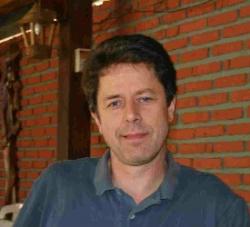非常抱歉,
你要访问的页面不存在,
非常抱歉,
你要访问的页面不存在,
非常抱歉,
你要访问的页面不存在,
验证码:

职称:Chair
所属学校:University of California-Santa Cruz
所属院系:Physics
所属专业:Physics, General
联系方式: 831-459-2125
Johnson's work is in the areas of experimental particle physics and, more recently, applications of particle-physics technology to high-energy astrophysics and medical physics. In the area of high-energy astrophysics, Johnson has worked since 1994 on a NASA/D.O.E. project named the Fermi Gamma-ray Space Telescope (formerly named GLAST), an orbiting gamma-ray telescope based on the silicon-strip technology in which SCIPP specializes. The Fermi Large Area Telescope (LAT) instrument is a pair-conversion telescope that delivers up to two-orders-of-magnitude improvement in sensitivity to astrophysical sources of high-energy gamma rays, compared with the highly successful EGRET experiment on the Compton Gamma Ray Observatory, which flew in the 1990s. The LAT gamma-ray converter and charged-particle tracker includes almost 885,000 silicon-strip channels operating on only 160 Watts of electrical power. Johnson concentrated on development of the low-power, low-noise readout electronics needed for this application. A CMOS VLSI chip set was designed in the SCIPP lab, together with the necessary supporting electronics. Prototypes were extensively tested in a full-scale tracker module assembled in the SCIPP lab and operated in December 1999 and January 2000 in the SLAC test beam and in 2001 on a high-altitude balloon flight. Other SCIPP faculty who contributed to the Fermi-LAT design and fabrication are Bill Atwood (the originator of the LAT conceptual design, on which he began detailed Monte-Carlo simulations in 1992), Hartmut Sadrozinski, most notable for leading the effort to design and procure the silicon-strip detectors, and Terry Schalk, who contributed to the management of the flight software development.